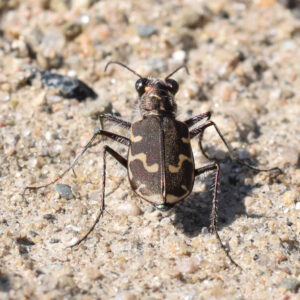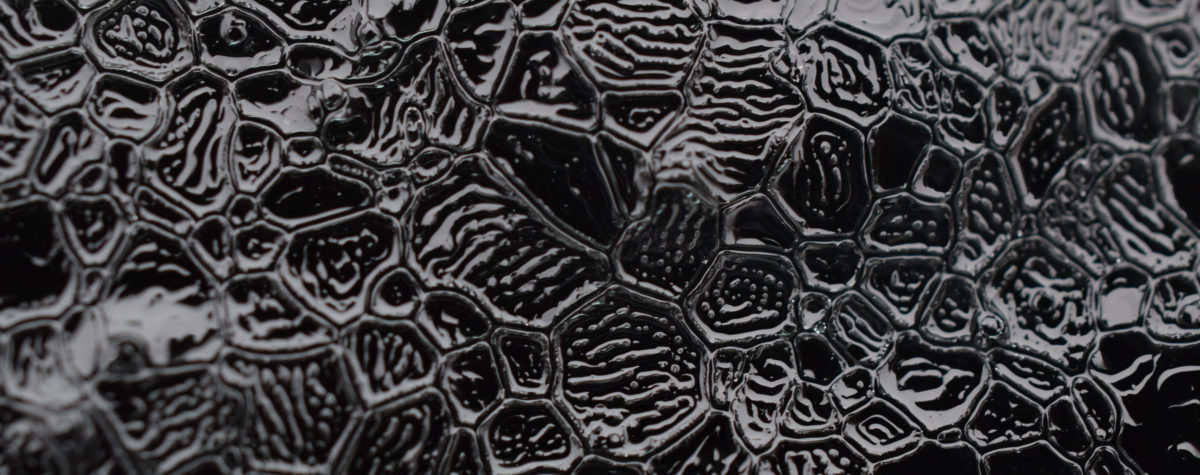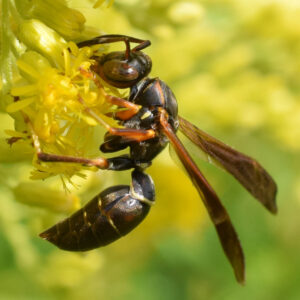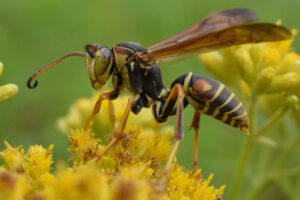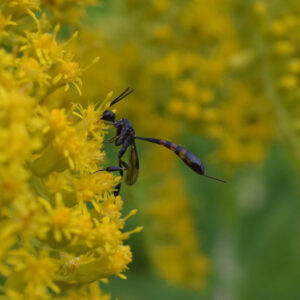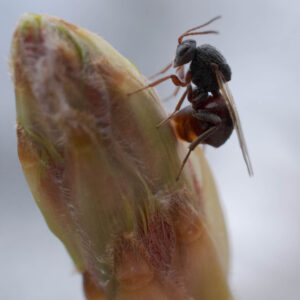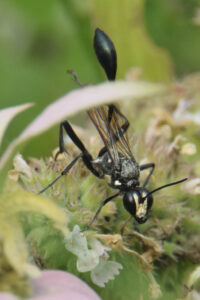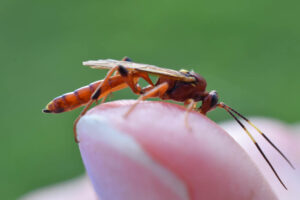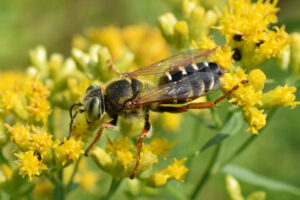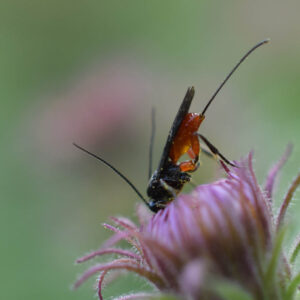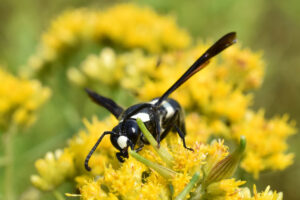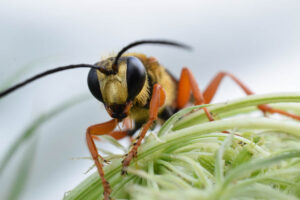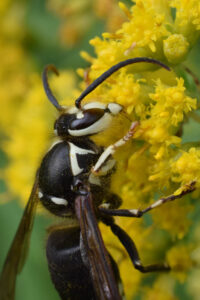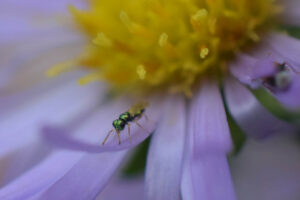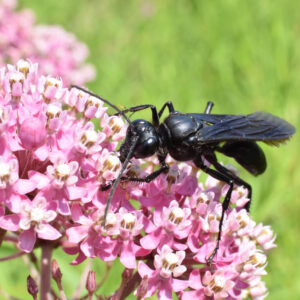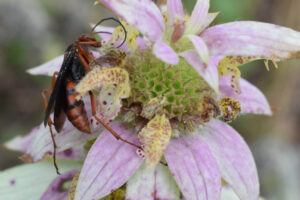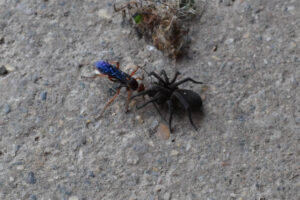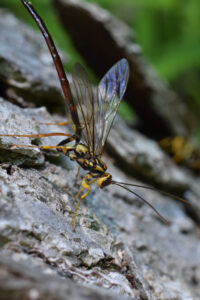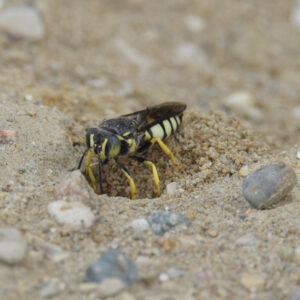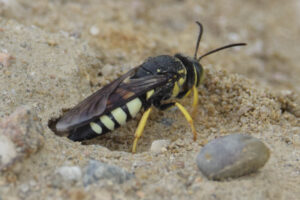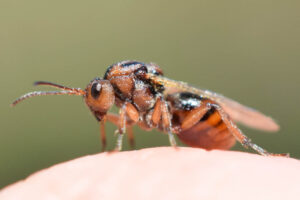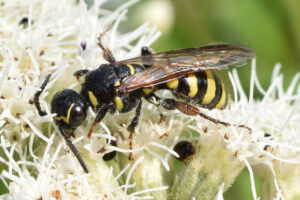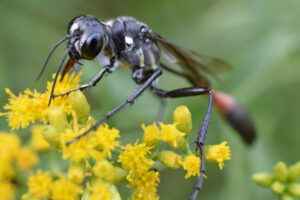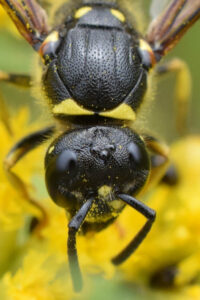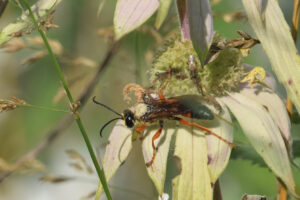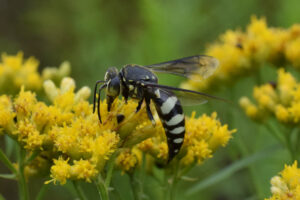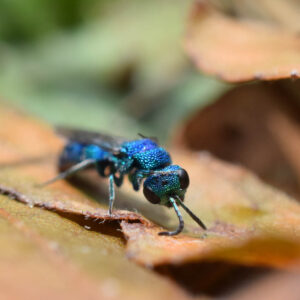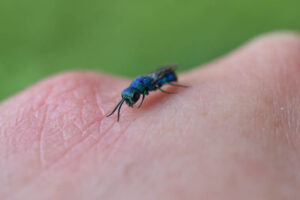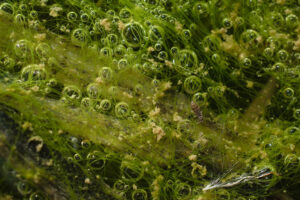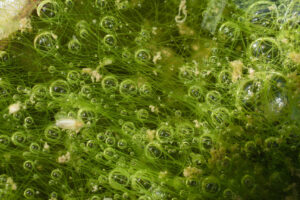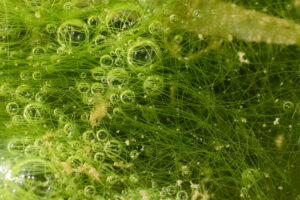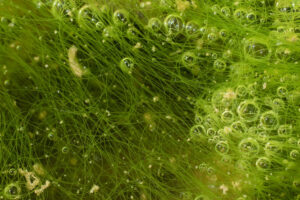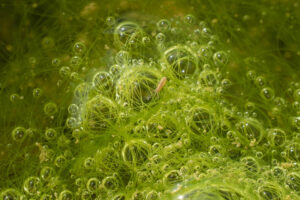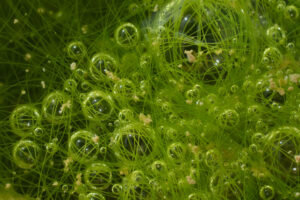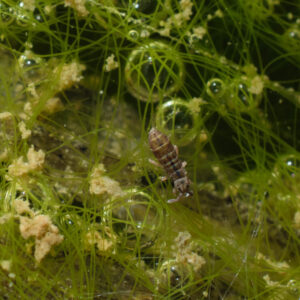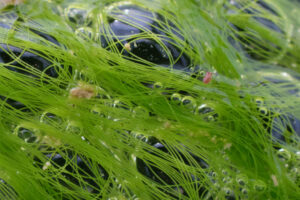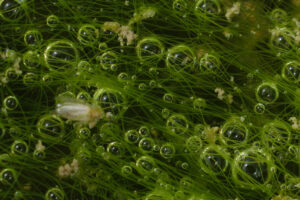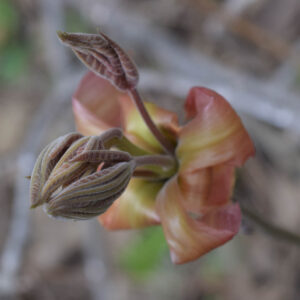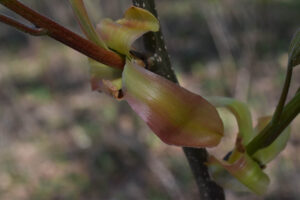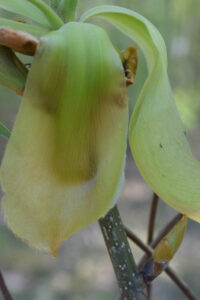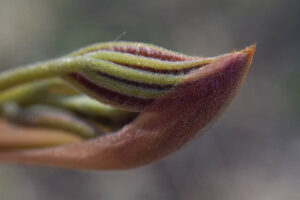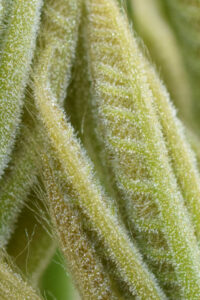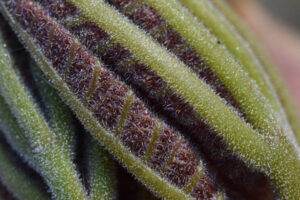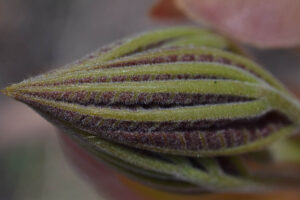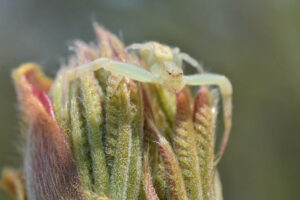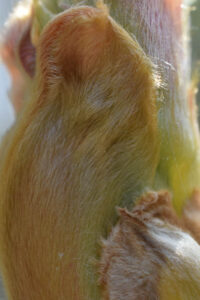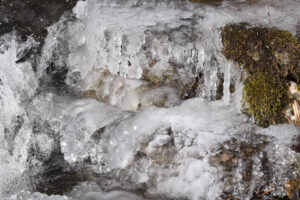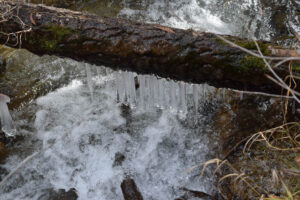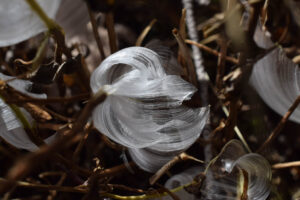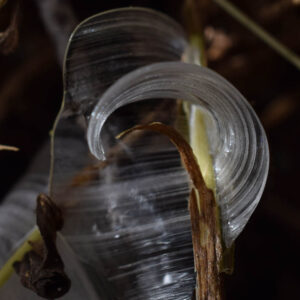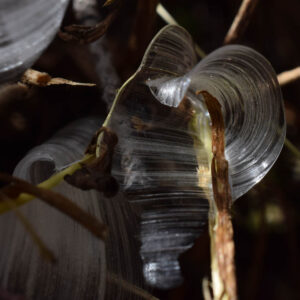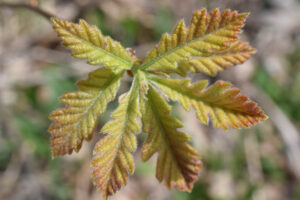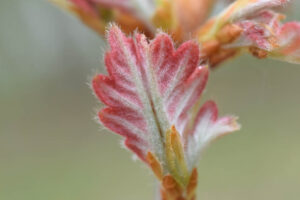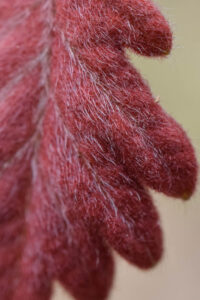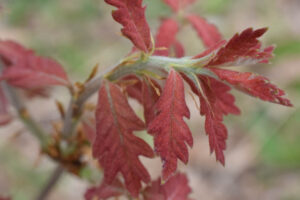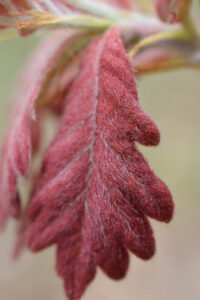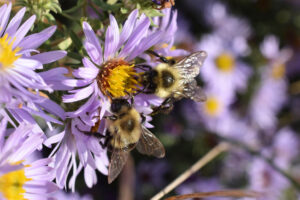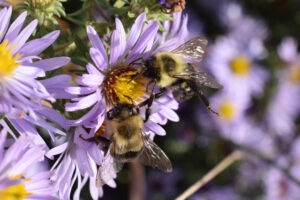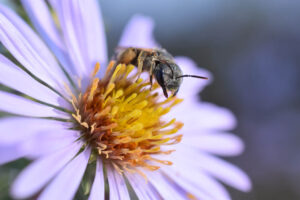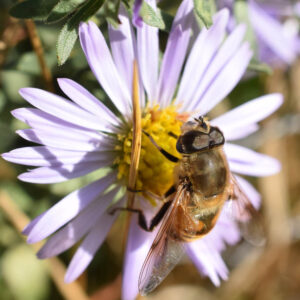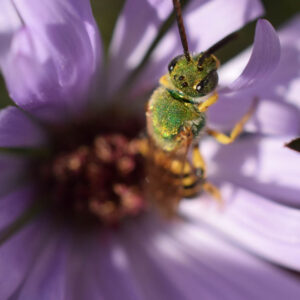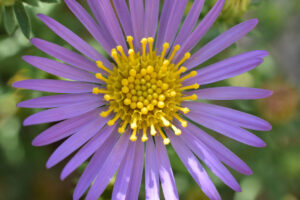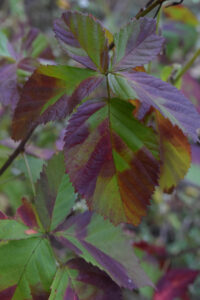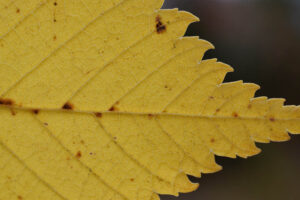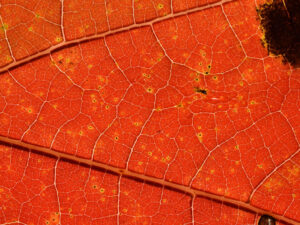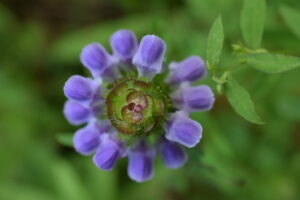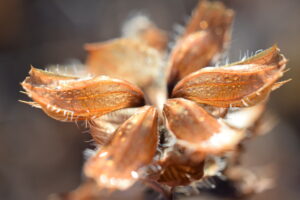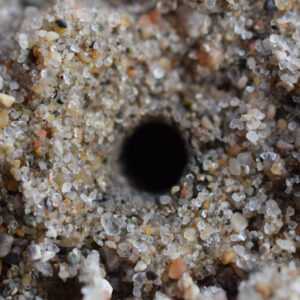
I wasn’t paying a whole lot of attention to all the tiny holes in the sand around the seasonal pond area until little flickers of movement inside the holes caught my attention. (For some sense of scale in the photo, what looks like little pebbles are grains of sand.) They were only ever in my peripheral vision; whatever creature I was seeing was apparently very fast and skittish.
Unable to see properly what kept darting back into the holes, I eventually resorted to crouching over ones I’d seen recent movement in with my camera and holding very still… and waiting. I had to have my camera focused on the spot they would emerge before they came out as any tiny movement would cause them to disappear. After a bit of patience (and physical discomfort) I managed to get a couple clear shots of the heads of the creatures poking out of the hole… but they didn’t look like anything I recognized.
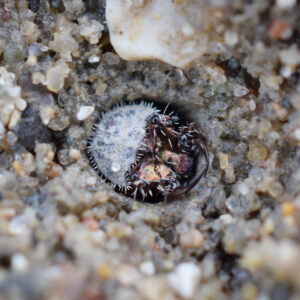
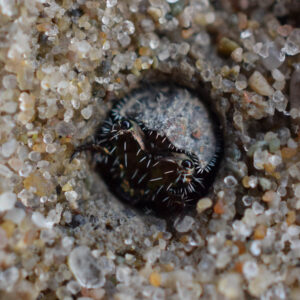
I thought they might be the immature form of some insect, but it took me quite a bit of searching before I managed to find something that looked similar… a tiger beetle larva! I don’t know how to tell what species of tiger beetle just from the head of the larvae, but it is quite likely that these were bronzed tiger beetle larvae, because I’d seen quite a few adults of that species in the same spot earlier that spring.
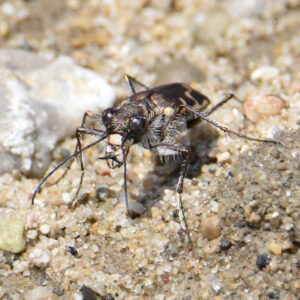
The other interesting thing about looking up pictures of the larvae was that I realized that it was just the head and thorax that is so well developed at this stage, and the rest of the body looks more grub-like. I had thought, looking at them in my pictures, that they looked like little ambush predators with those large mandibles (added to the fact that they didn’t ever seem to come all the way out of their burrows), and it turns out that’s exactly what they are. They pop out and grab passing insects (or other small animals), which is also why their front end is so much more developed at that stage. (The adults are predators too, but they chase down their prey.)
